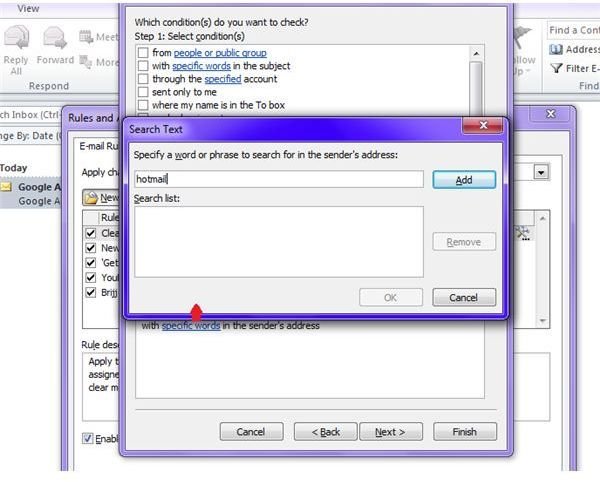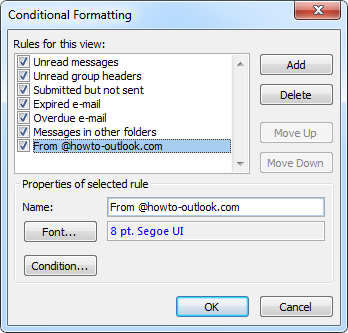Outlook Rule From Domain
I want to create a rule that moves all non-corporate email to a separate folder.
I don't mix work and personal business, but I would like to separate renewals and subscriptions from MSDN and TechNET from email I receive from my colleagues.
I want all email NOT sent from a specific domain, like @example.com, to go to a separate folder.
Jun 19, 2019 - This article describes the process of creating a rule in Outlook. For example, you have the email address user@domain.com and the alias. Outlook Mail rule by domain I was just switched over to the new Outlook Mail platform, and was dismayed to realise some of my rules failed to carry over. Namely, any rule which was did not utilise exact matching. How to Whitelist a domain on Outlook 365. System are not received by clients using Outlook (a.k.a. Microsoft Office) 365. 4) Click “+” to add a new rule.
Breakthrough3 Answers
Create a new message rule
Step 1: Uncheck all boxes
Click Next. Outlook will ask 'This rule will be applied to every message you receive. Is this correct?' Choose Yes.
Outlook Rule From Domain Name
Step 2: 'Move to specified folder'
Specify a folder and click Next.
Step 3: 'Except with specific words in the senders address'
Specify @mydomain.com
The easiest way would be to create an address book that holds all of your personal email contacts and create a rule that moves the message using the condition sender is in specified Address Book where the address book is the one you just created.
Of course, the real question is why you have personal email sent to your corporate email address. Any email sent through your work system is subject to their rules and regulations regarding email. They generally reserve the right to read any email that comes in and do whatever they want with it, since it's using corporate resources for personal use. Retention policies also apply meaning if they require all messages to be deleted after 30 days of receipt or retained indefinitely for legal reasons it'll apply to your personal mail as well. It would probably be smarter to have your personal email elsewhere and check it remotely.

Similar to subman's answer, except in step #3 specify 'except if sender is in specified Address Book'.
 ÐаnÐаn
ÐаnÐаn